Cordycepin ameliorates cardiac hypertrophy via activating the AMPKα pathway
- PMID: 31225721
- PMCID: PMC6653598
- DOI: 10.1111/jcmm.14485
Cordycepin ameliorates cardiac hypertrophy via activating the AMPKα pathway
Abstract
Increase of myocardial oxidative stress is closely related to the occurrence and development of cardiac hypertrophy. Cordycepin, also known as 3'-deoxyadenosine, is a natural bioactive substance extracted from Cordyceps militaris (which is widely cultivated for commercial use in functional foods and medicine). Since cordycepin suppresses oxidative stress both in vitro and in vivo, we hypothesized that cordycepin would inhibit cardiac hypertrophy by blocking oxidative stress-dependent related signalling. In our study, a mouse model of cardiac hypertrophy was induced by aortic banding (AB) surgery. Mice were intraperitoneally injected with cordycepin (20 mg/kg/d) or the same volume of vehicle 3 days after-surgery for 4 weeks. Our data demonstrated that cordycepin prevented cardiac hypertrophy induced by AB, as assessed by haemodynamic parameters analysis and echocardiographic, histological and molecular analyses. Oxidative stress was estimated by detecting superoxide generation, superoxide dismutase (SOD) activity and malondialdehyde levels, and by detecting the protein levels of gp91phox and SOD. Mechanistically, we found that cordycepin activated activated protein kinase α (AMPKα) signalling and attenuated oxidative stress both in vivo in cordycepin-treated mice and in vitro in cordycepin treated cardiomyocytes. Taken together, the results suggest that cordycepin protects against post-AB cardiac hypertrophy through activation of the AMPKα pathway, which subsequently attenuates oxidative stress.
Keywords: AMPKα; cardiac hypertrophy; cardiac remodeling; cordycepin; oxidative stress.
© 2019 The Authors. Journal of Cellular and Molecular Medicine published by John Wiley & Sons Ltd and Foundation for Cellular and Molecular Medicine.
Conflict of interest statement
The authors declare no conflicts of interest.
Figures
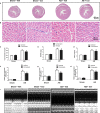
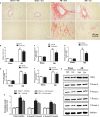


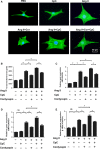
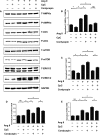
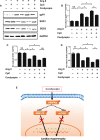
References
-
- Wang HB, Zeng P, Yang J, Yang J, Liu XW. Paclitaxel‐eluting stents versus sirolimus‐eluting stents in patients with diabetes mellitus undergoing percutaneous coronary intervention: a systematic review and meta‐analysis of randomized controlled trials. Intern Emerg Med. 2016;11:1005‐1013. - PubMed
-
- Zhao CH, Ma X, Guo HY, Li P, Liu HY. RIP2 deficiency attenuates cardiac hypertrophy, inflammation and fibrosis in pressure overload induced mice. Biochem Biophys Res Comm. 2017;493:1151‐1158. - PubMed
-
- Xiao Y, Yang Z, Wu QQ, et al. Cucurbitacin B protects against pressure overload induced cardiac hypertrophy. J Cell Biochem. 2017;118:3899‐3910. - PubMed
-
- Ma ZG, Zhang X, Yuan YP, et al. A77 1726 (leflunomide) blocks and reverses cardiac hypertrophy and fibrosis in mice. Clin Sci (Lond). 2018;132:685‐699. - PubMed
Publication types
MeSH terms
Substances
LinkOut - more resources
Full Text Sources

